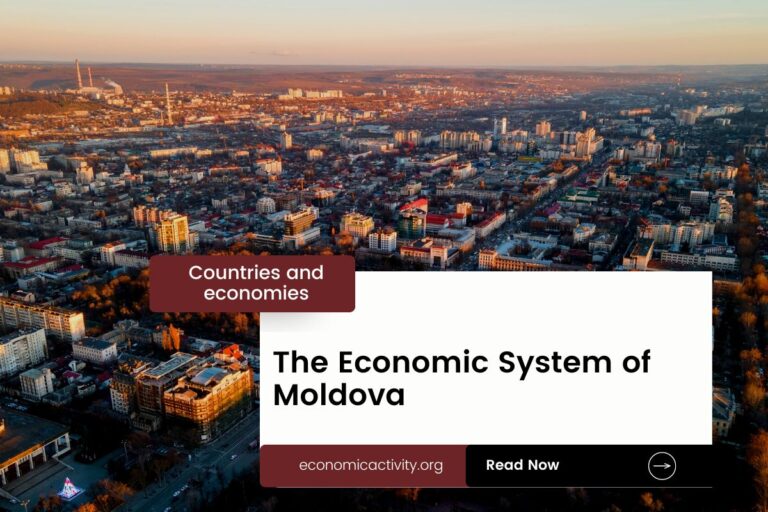Kenya, with a population of 54,027,487, is ranked 26th in the world, just behind Myanmar. Located in East Africa, Kenya covers a total area of 580,370 square kilometers, ranking 47th globally, just below Botswana.
Kenya’s economic position in 2022 showcases a GDP of $113,420,008,178.79, ranking 64th globally. It follows Puerto Rico, which has a GDP of $113,434,800,000. The GDP per capita for Kenya in 2022 is $2,099.30, ranking 147th worldwide. It lags behind Nigeria, with a GDP per capita of $2,162.63.
Despite facing challenges, Kenya continues to strive for economic growth and development, with a diverse economy that includes agriculture, manufacturing, and services sectors contributing to its overall economic stability.
What are the economic activities of Kenya?
- Primary activities: 34.5% of GDP.
- Secondary activities: 17.8% of GDP.
- Tertiary activities: 47.5% of GDP.

Primary Sector of Kenya
The primary sector in Kenya, particularly agriculture, thrives due to its diverse climate and abundant natural resources. With 48.69% of the country’s land dedicated to agriculture, Kenya produces a variety of crops and animal products. The main agricultural products include sugarcane, milk, maize, tea, bananas, potatoes, cabbages, camel milk, cassava, and mangoes/guavas.
Despite contributing 34.5% to the GDP, agriculture plays a crucial role in the economy by providing employment and sustenance. The sector’s significance lies in the wide range of products it offers, sustaining both domestic consumption and export markets.
With a diverse geological landscape, the primary sector thrives on abundant natural resources like limestone, soda ash, salt, gemstones, and more. These resources play a vital role in the economy through industries such as mining, tourism, and energy production, contributing significantly to the country’s GDP and employment opportunities.
Secondary Sector of Kenya
What is the secondary sector or what are secondary activities?
The secondary sector involves industries that produce finished goods from raw materials. In Kenya, the main industrial products include transportation equipment, various services, manufacturing goods, construction materials, and retail products. These sectors play a vital role in the country’s economy by creating jobs and contributing to domestic and international trade.
Manufactures in Kenya’s total exports in 2023 accounted for 30.74%, indicating their significance but not as crucial as other sectors, suggesting a diverse export portfolio.
Tertiary sector of Kenya
What is the tertiary sector or what are tertiary activities?
The tertiary sector in Kenya encompasses a wide range of services where individuals provide knowledge and time to enhance productivity and meet various needs. This sector includes intangible goods such as advice, expertise, and attention. Some key tertiary activities in Kenya are healthcare and medical care, education and training, banking and finance, communication and information exchange, tourism and hospitality, transportation and logistics, and security and protection. These services play a crucial role in driving the country’s economy and meeting the demands of its population.
Of particular importance, Kenya’s tourism sector is a vital economic pillar, contributing significantly to the nation’s GDP. With an impressive 2,049,000 annual arrivals, accounting for 3.79% of the population, the industry thrives. Renowned for its unparalleled safari experiences and breathtaking natural landscapes, the Masai Mara National Reserve and the picturesque Diani Beach attract visitors from around the globe.
Another example of tertiary economic activity is the mobile cellular sector, boasting approximately 66 million subscriptions, which fosters technological growth by enhancing communication, access to information, and digital services.
Military Activities and Economic Sectors of Kenya
The military is a good example of how different economic activities work together. In Kenya, the primary sector helps by providing resources needed for military use. The secondary sector focuses on making military equipment. The tertiary sector includes services like training and support. The quaternary sector is important for military research and development, while the quinary sector involves high-level decisions and strategies.
In 2023, Kenya’s military expenditure was 999.5 million US dollars, which is 1.0% of the country’s GDP. The active military force has 120,092 personnel, resulting in about 0.6 active military members for every 1,000 people in the country.
Biggest company in Kenya
Which is the biggest company in Kenya? Safaricom is the largest, with a market value of $8.21 billion. It operates in the telecommunications industry, part of the tertiary sector. Founded in 1997, Safaricom provides mobile services and internet access across the country.
International Trade of Kenya
Import Activities of Kenya

Kenya’s import activities are of high importance, with imports totaling $18.6 billion, accounting for 21.5% of the country’s GDP in 2023.
Kenya’s import activities are significant, with China being the largest partner at 26%, followed by the UAE at 14% and India at 11%. Key import commodities include refined petroleum, palm oil, garments, wheat, and plastics.
Exports Activities of Kenya

In 2023, Kenya’s total exports reached $7.16 billion, accounting for 12.22% of its GDP. With a medium level of importance, export activities play a significant role in Kenya’s economy, contributing to growth and stability.
Kenya’s export activities are diverse, with top partners being the US, Uganda, Pakistan, Netherlands, and Rwanda. Key export commodities include tea, cut flowers, garments, coffee, and titanium ore.
Kenya economy challenges in 2024
Kenya, a fast-growing economy in East Africa, faces challenges in managing its current account and debt service. Despite a strong agriculture sector, the country is vulnerable to climate change-induced droughts. IMF programs aim to address these issues while promoting business-friendly policies for infrastructure and digital innovation.



Leave a Reply